Military
This WWII Battle Had By Far The Most Casualties: Every Major Battle, Ranked

Published:
Last Updated:

If you’re of a certain age, you might have memories of an older family member telling stories of their time in “the war.” World War II touched many lives, and in so many different ways. Your great uncle can still feel the vibrations of the machine gun he manned on the tank in France. Your grandfather still talks about the Japanese prisoners he was assigned to watch over at Iwo Jima. Former soldiers aren’t the only ones the war left a permanent mark on: women stayed home and worked factory jobs, children grew Victory Gardens as they watched in fear for the dreaded Western Union messenger. There were brave souls by the thousands who were everyday heroes in one way or another. By its end, World War II had left a mark on the soul of every person alive. The battles fought left so many casualties and a cost so great we are still processing it today.
Battles were fought on many different fields, oceans, and skies, from the Philippines to France to Japan to the Soviet Union and many places in between. Many of the battles turned the tide for one side or the other. To identify the major World War II battles with the most casualties, 24/7 Wall St. reviewed WWII battles from World War 2 Facts, an online database of WWII battles. We ranked these battles based on the total military casualties: killed, missing, captured, or wounded. We included supplementary information regarding total casualties on the Axis and Allied sides and the troops and military assets on both sides. We also included the start date on which these battles took place. Some supplementary information was obtained from various other military and historical sources.
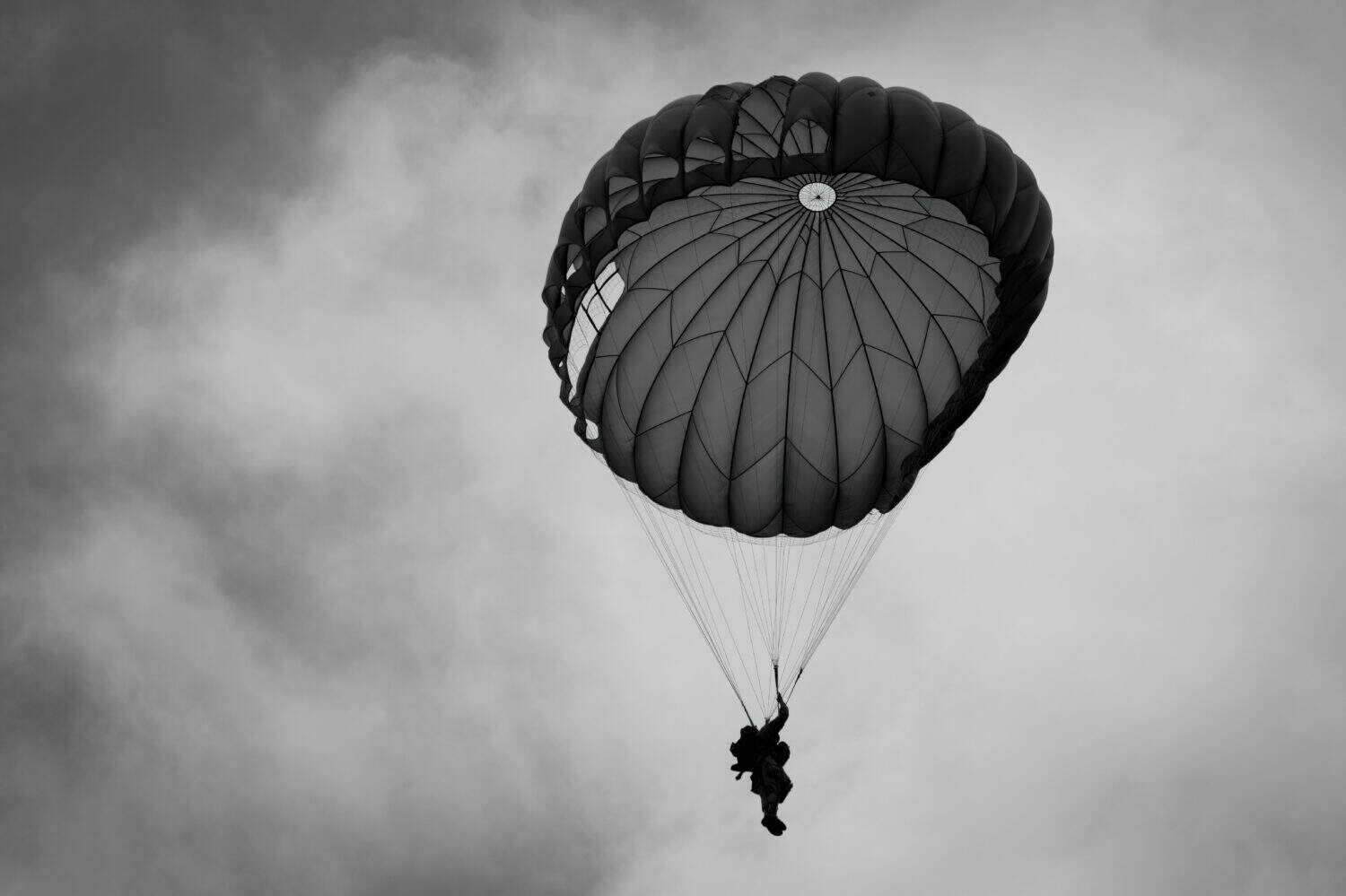
World wars are no small endeavor. Many were sent from their homes to fight on battlefields in foreign lands. Many at home were asked to sacrifice comforts to build up the war. All economies were rerouted during this time, all to fund the war effort. Rationing was implemented, reusing and recycling materials became vogue, and plain “going without” was a way of life. Factories boomed to life to make the machines and weapons used to fight battles. Women went to work in jobs they had never been asked to perform before. The war economy is very real, and these battles were the result.
Here is a look at the major World War II battles with the most casualties.
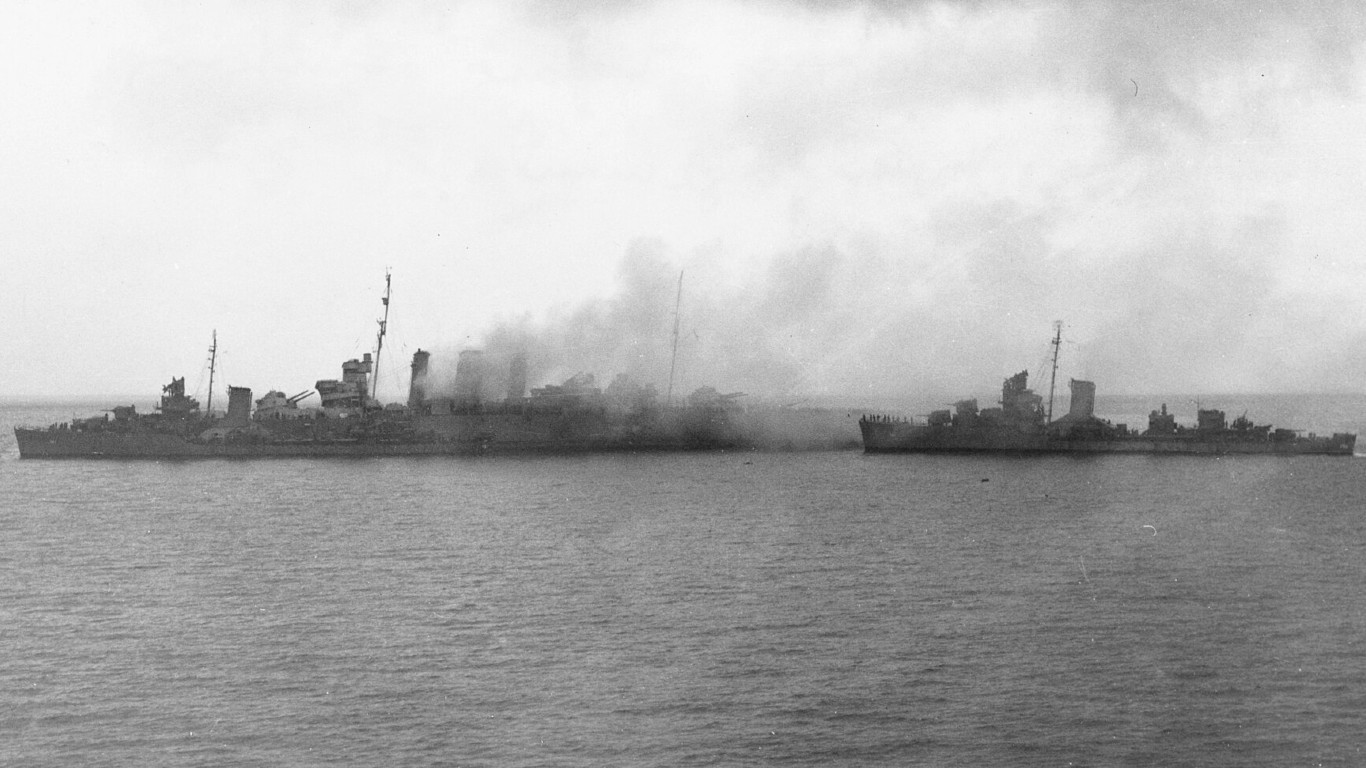
The Battle of Savo Island occurred in August 1942, with 1,135 casualties: 1,077 Allies and 58 Axis. There were 15 destroyers, 2 light cruisers, and 6 heavy cruisers with the Allied Powers. The Axis powers had 5 heavy cruisers, 2 light cruisers, and 1 destroyer.
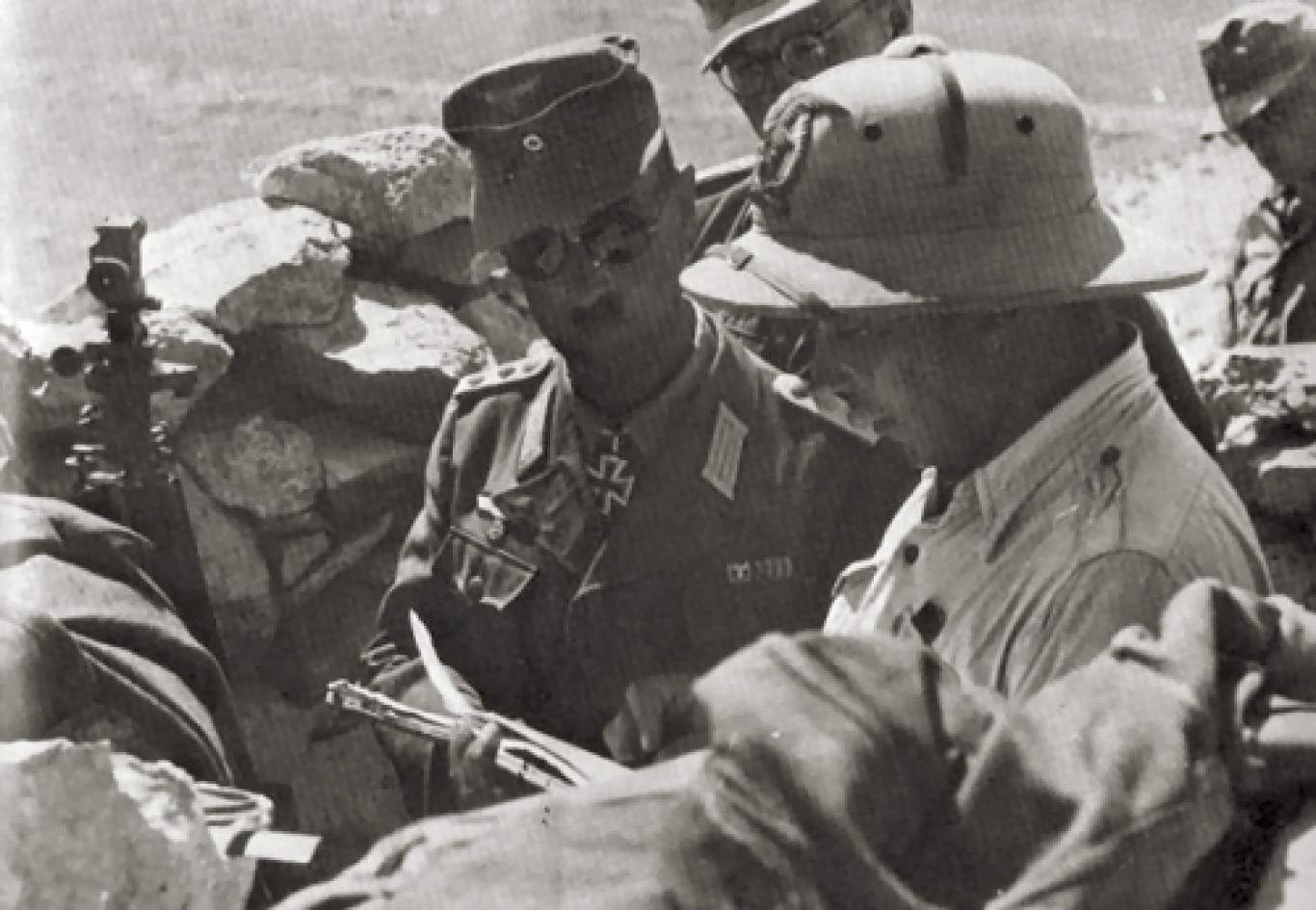
In June 1941, Operation Battleaxe took place in Cyrenaica, Libya. The total casualties were 1,647: 969 for the Allies and 678 for the Axis powers. The Allied powers showed up with 20,000+ men, 220 tanks, and 203 aircraft. 13,200 men, 194 tanks, and 214 aircraft came with the Axis powers.

The Battle of the Coral Sea was waged on the Coral Sea in May 1942. By the end, there were 1,656 casualties: 656 Allied casualties and 1,000 Axis casualties. The Allied powers present had 2 fleet carriers, 1 light carrier, 9 cruisers, 13 destroyers, and 128 carrier aircraft. The Axis powers had 2 fleet carriers, 1 light carrier, 9 cruisers, 15 destroyers, and 127 carrier aircraft.

The Siege of Bastogne occurred during December 1944 in Belgium, with at least 3,000 casualties: 3,000 Allies and an unknown amount for the Axis. There were 22,800 men, the 101st Airborne Division, CCB 10th Armored Division, and 705th Tank Destroyer Battalion with the Allied Powers. The Axis powers had 54,000 men and 7 German Divisions.

In September 1944, the Battle of the Philippine Sea took place in the Phillippine Sea. The total casualties were 3,096: 109 for the Allies and 2,987 for the Axis powers. The Allied powers showed up with 7 fleet carriers, 8 light carriers, 7 battleships, 28 submarines, 956 aircraft, and 99,000 men. 5 fleet carriers, 4 light carriers, 5 battleships, 24 submarines, 450 carrier-based aircraft, and 300 land-based aircraft came with the Axis powers.
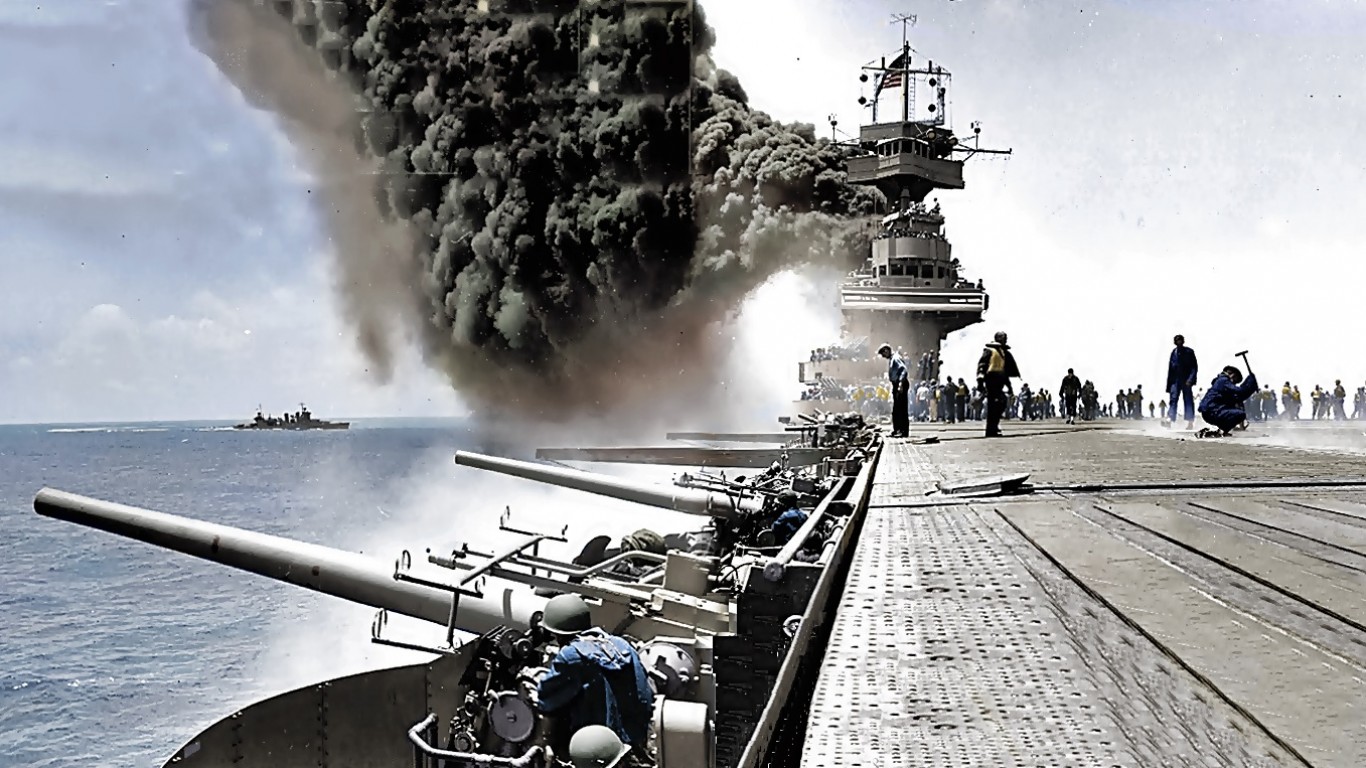
The Battle of Midway was waged in the Midway Atoll in June 1942. By the end, there were 3,364 casualties: 307 Allied casualties and 3,057 Axis casualties. The Allied powers present had 3 aircraft carriers, 25 support ships, 233 carrier aircraft, and 127 land-based aircraft. The Axis powers had 4 aircraft carriers, 2 battleships, 15 support ships (cruisers and destroyers), and 248 carrier aircraft.

The Battle of Pearl Harbor occurred during December 1941 in Oahu, Hawaii, with 3,714 casualties: 3,649 Allies and 65 Axis. There were 8 battleships, 8 cruisers, 30 destroyers, 4 submarines, and 390 aircraft with the Allied Powers. The Axis powers had 6 aircraft carriers, 2 battleships, 2 heavy cruisers, 1 light cruiser, 9 destroyers, 28 submarines, and 414 aircraft.

Operation Torch took place in Northwest Africa in November 1942. The total casualties were 4,542: 1,199 for the Allies and 3,343 for the Axis powers. The Allied powers showed up with 107,000 men, while the Axis powers brought 60,000 men.

The Battle of Britain was waged on the English Channel in July 1940. By the end, there were 5,269 casualties: 966 Allied casualties and 4,303 Axis casualties. The Allied powers present had 1,963 serviceable aircraft, and the Axis powers had 2,550 serviceable aircraft.
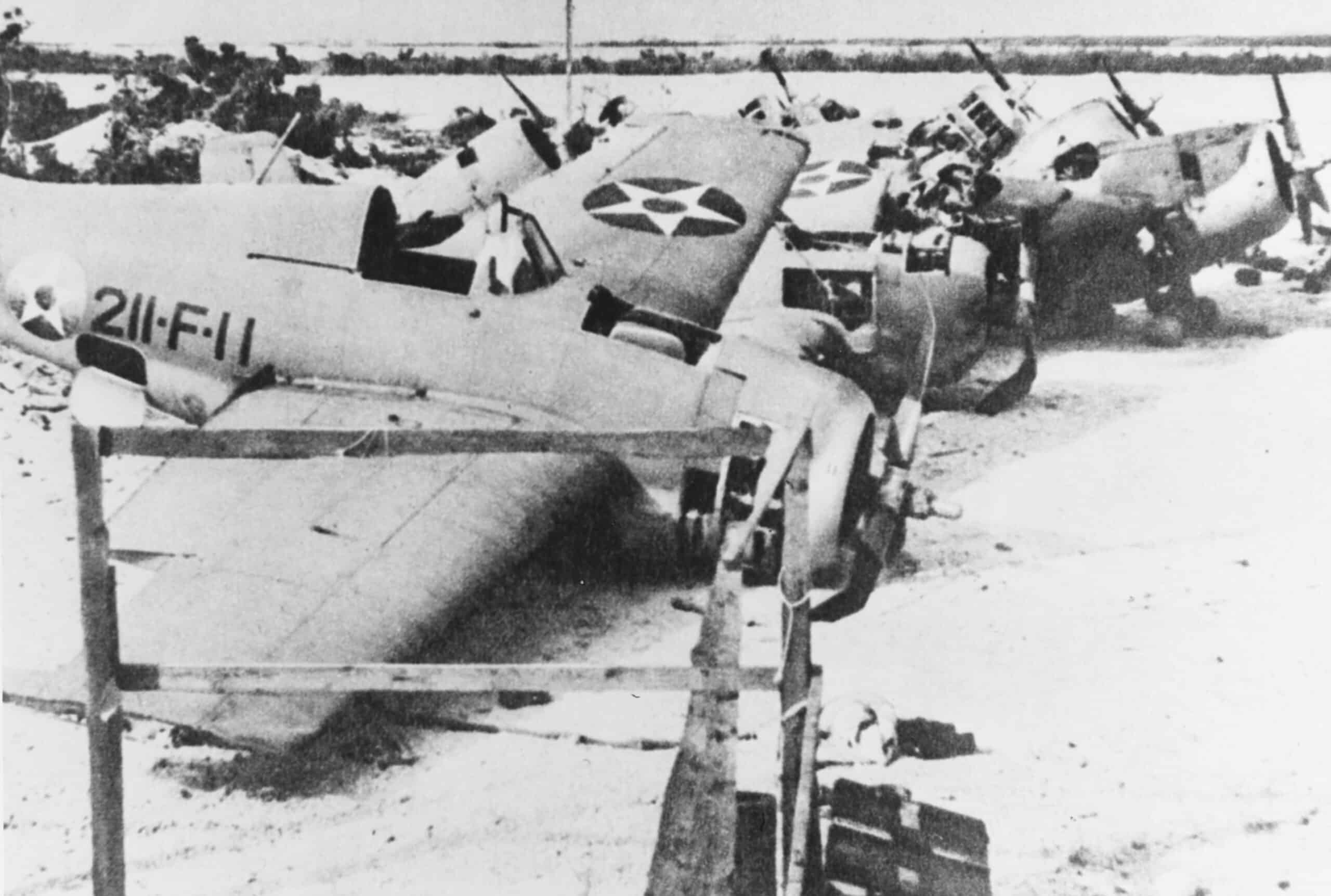
The Battle of Wake Island occurred in U.S. territory during December 1941, with 7,200 casualties: 1,200 Allies and 6,000 Axis. There were 449 USMC personnel, 6 artillery, 12 aircraft, 68 Navy personnel, and 5 Army personnel with the Allied Powers. The Axis powers had 3 light cruisers, 8 destroyers, 3 submarines, heavy cruisers, 2 aircraft carriers, and 2,500 infantry.
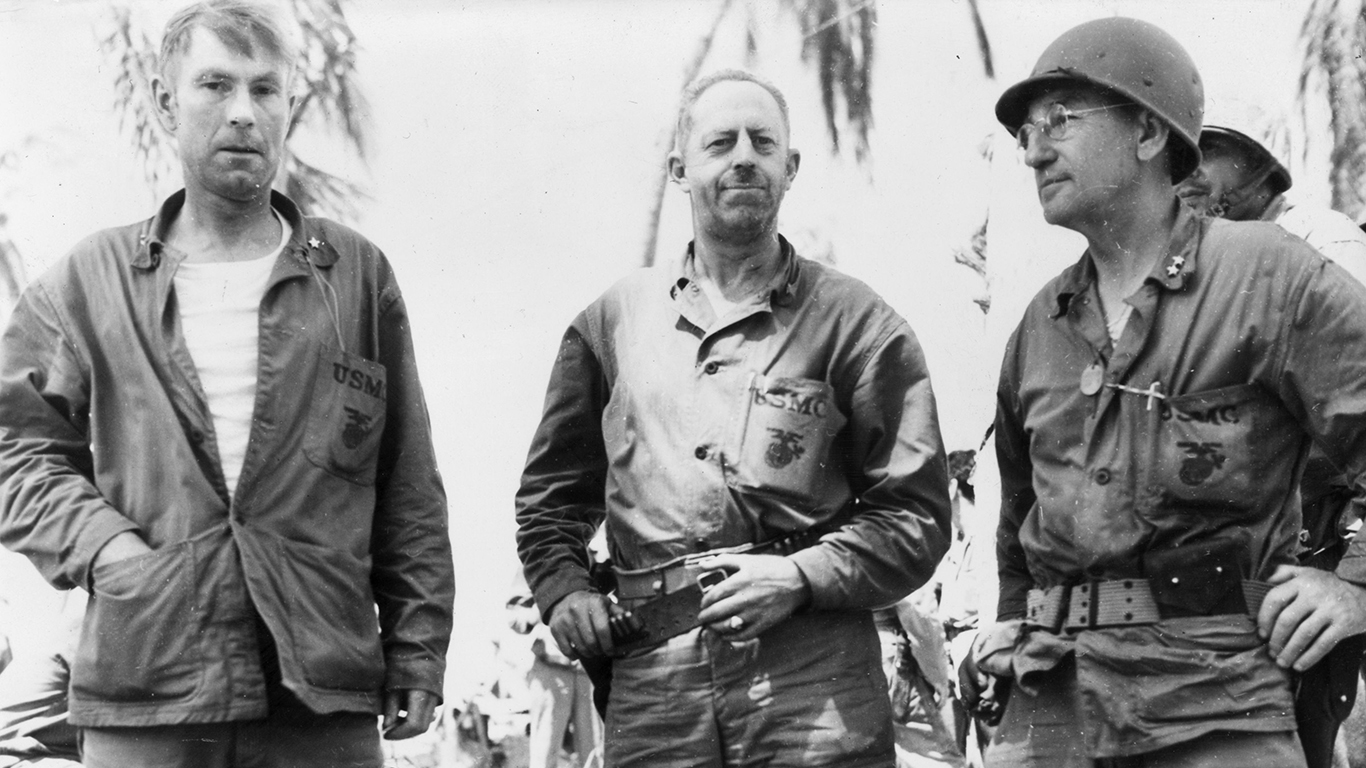
In November 1943, the Battle of Tarawa occurred on Betio Island, Tarawa Atoll, and Gilbert Islands. The total casualties were 8,504: 3,797 for the Allies and 4,707 for the Axis powers. The Allied powers showed up with 35,000 men, while the Axis powers brought 3,000 men.
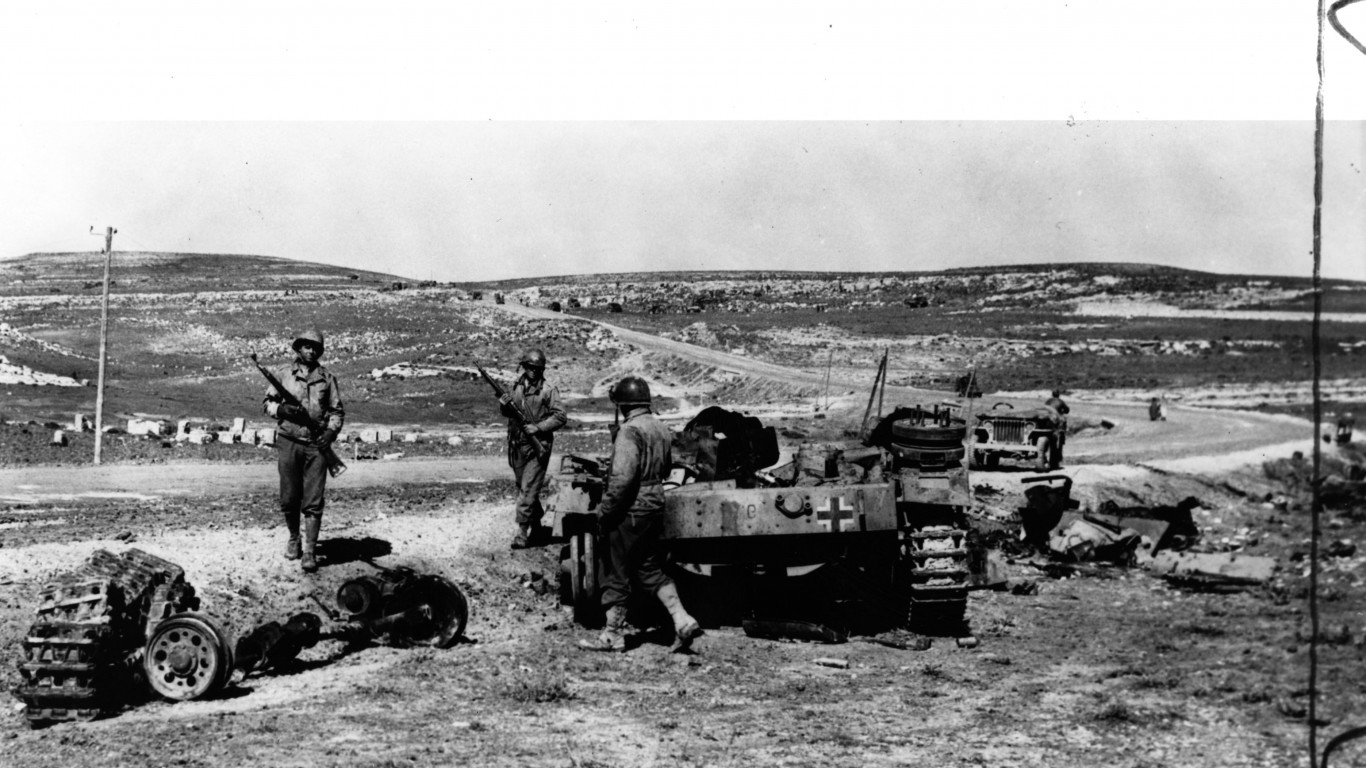
The Battle of the Kasserine Pass was waged in Kasserine, Tunisia, in November 1943. By the end, there were 12,000 casualties: 10,000 Allied casualties and 2,000 Axis casualties. The Allied powers present had 30,000 men, and the Axis powers had 22,000 men.

The Battle of Leyte Gulf occurred in the Philippines during October 1944, with 13,500 casualties: 3,000 Allies and 10,500 Axis. There were 8 fleet carriers, 8 light carriers, 18 escort carriers, 12 battleships, 24 cruisers, 141 destroyers, and 1,500 aircraft with the Allied Powers. The Axis powers had 1 fleet carrier, 3 light carriers, 9 battleships, 14 heavy cruisers, 6 light cruisers, 35 destroyers, and 300 aircraft.

The Battle of Corregidor took place in the Philippines in May 1942. The total casualties were 14,900: 12,800 for the Allies and 2,100 for the Axis powers. The Allied powers showed up with 13,000 men, while the Axis powers brought 75,000 men.
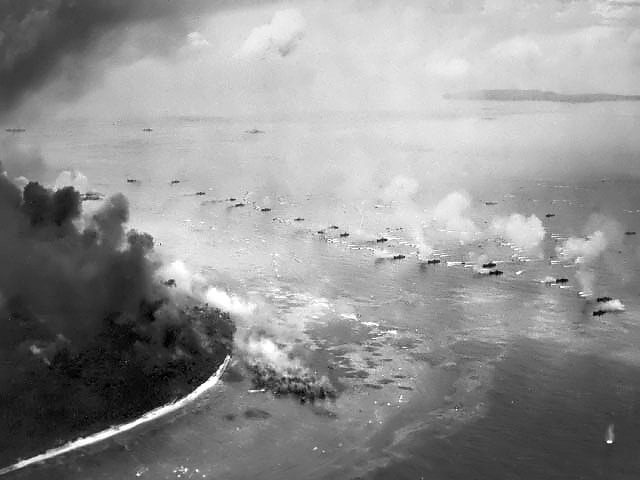
The Battle of Peleliu was waged in the Palau Islands in September 1944. By the end, there were 20,701 casualties: 9,804 Allied casualties and 10,897 Axis casualties. The Allied powers present had 28,484 men, and the Axis powers had 11,000 men.

Operation Market Garden occurred during September 1944 in the Eindhoven-Nijmegen-Arnhem Corridor, Netherlands, with 30,500 casualties: 17,200 Allies and 13,300 Axis. There were 41,628 airborne troops, 1 armored division, 2 infantry divisions, and 1 armored brigade with the Allied Powers. The Axis powers had 110,000 men, 9th and 10th SS Panzer Divisions.

The Battle of Crete took place in Greece in May 1941. The total casualties were 30,528: 23,850 for the Allies and 30,528 for the Axis powers. The Allied powers showed up with 40,000 men. The Axis powers brought 31,700 men, 500 transports, and 610 aircraft.
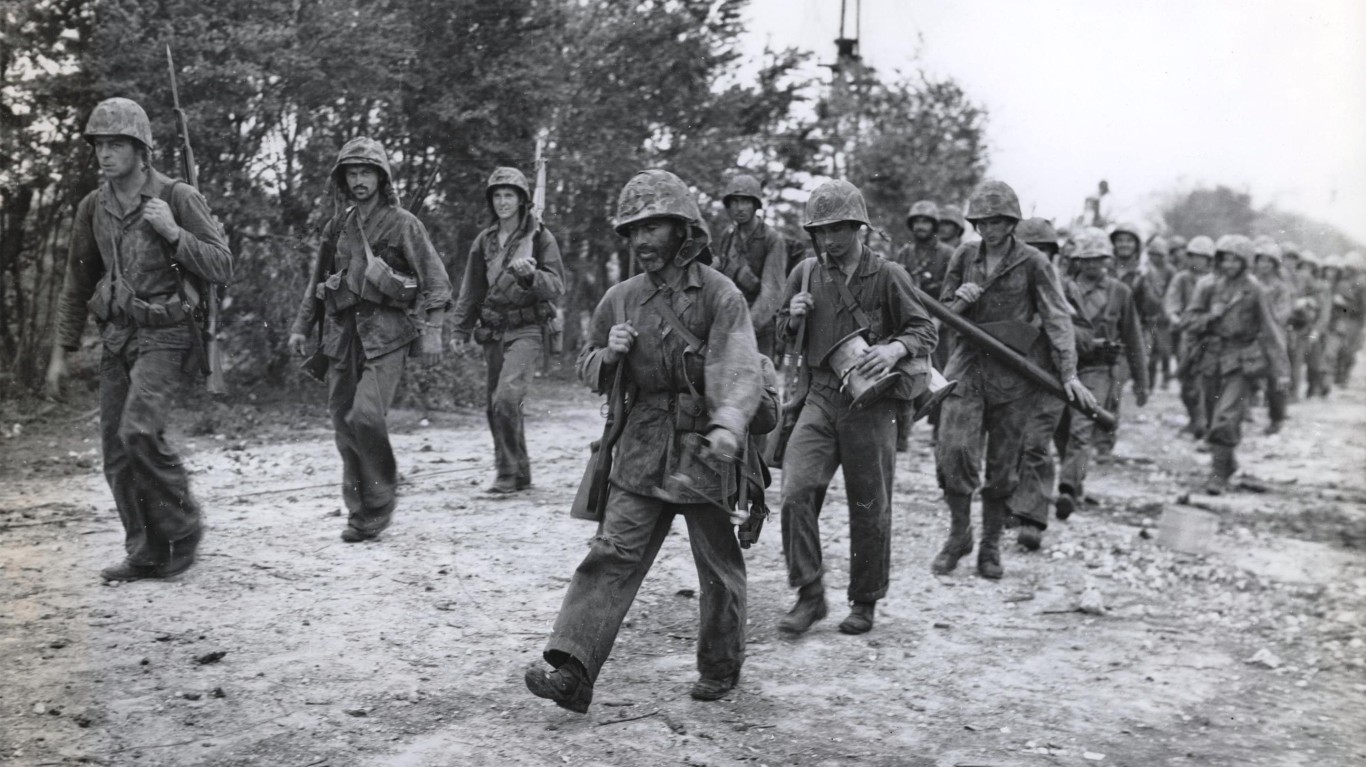
The Battle of Saipan was waged in the Mariana Islands during June 1944. By the end, there were 38,234 casualties, 13,313 Allied casualties, and 24,921 Axis casualties. The Allied powers present had 71,000 men, and the Axis powers had 31,000 men.
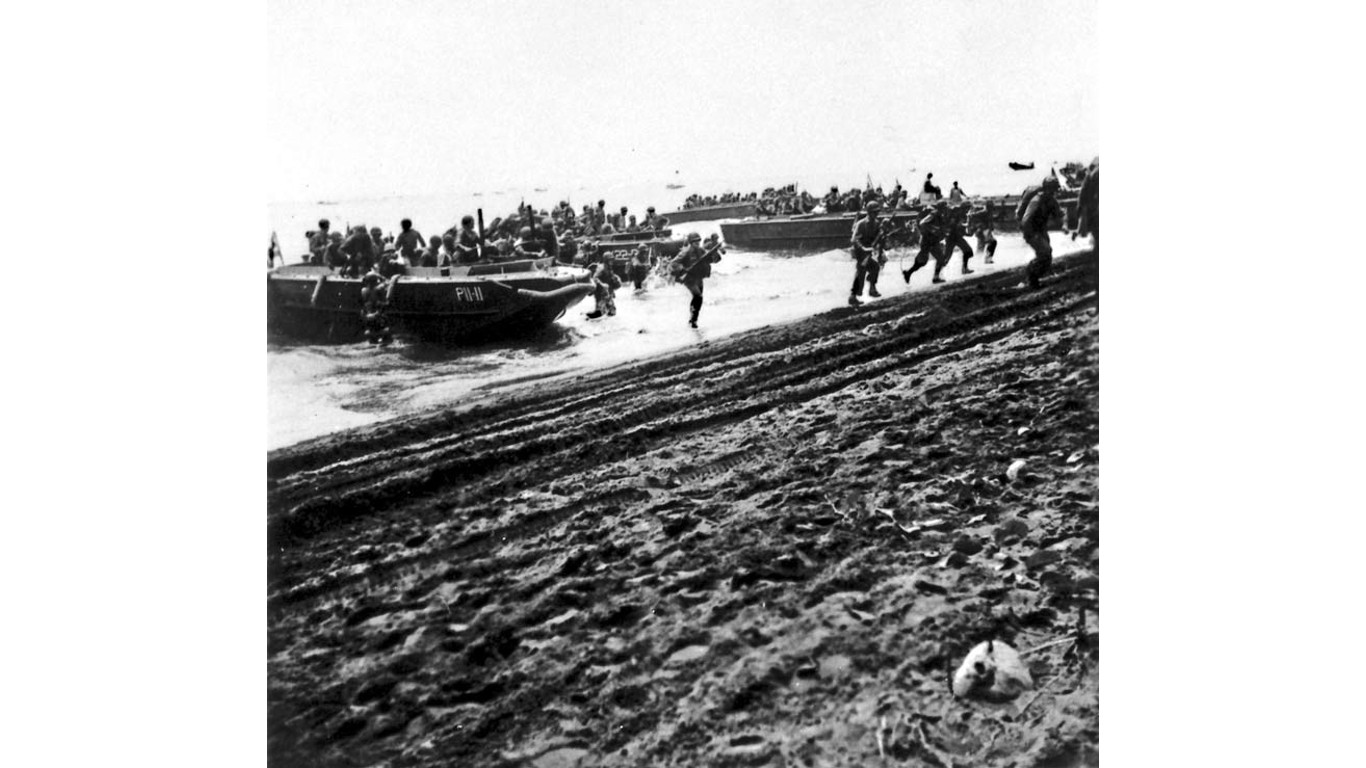
The Guadalcanal Campaign occurred in the British Solomon Islands during August 1942, with 39,100 casualties: 7,100 Allies and 32,000 Axis. There were 60,000 men, 1 aircraft carrier, 2 battleships, 2 heavy cruisers, 3 light cruisers, and 12 destroyers with the Allied Powers. The Axis powers had 36,200 men, 2 battleships, 6 heavy cruisers, 4 light cruisers, and 16 destroyers.

In July 1942, the First Battle of El Alamein occurred in Egypt. The total casualties were 44,102: 13,560 for the Allies and 30,542 for the Axis powers. The Allied powers had 195,000 men, 1,029 tanks, 730-750 aircraft, and 892-908 artillery pieces. 116,000 men, 547 tanks, 770-900 aircraft, and 552 artillery pieces came with the Axis powers.
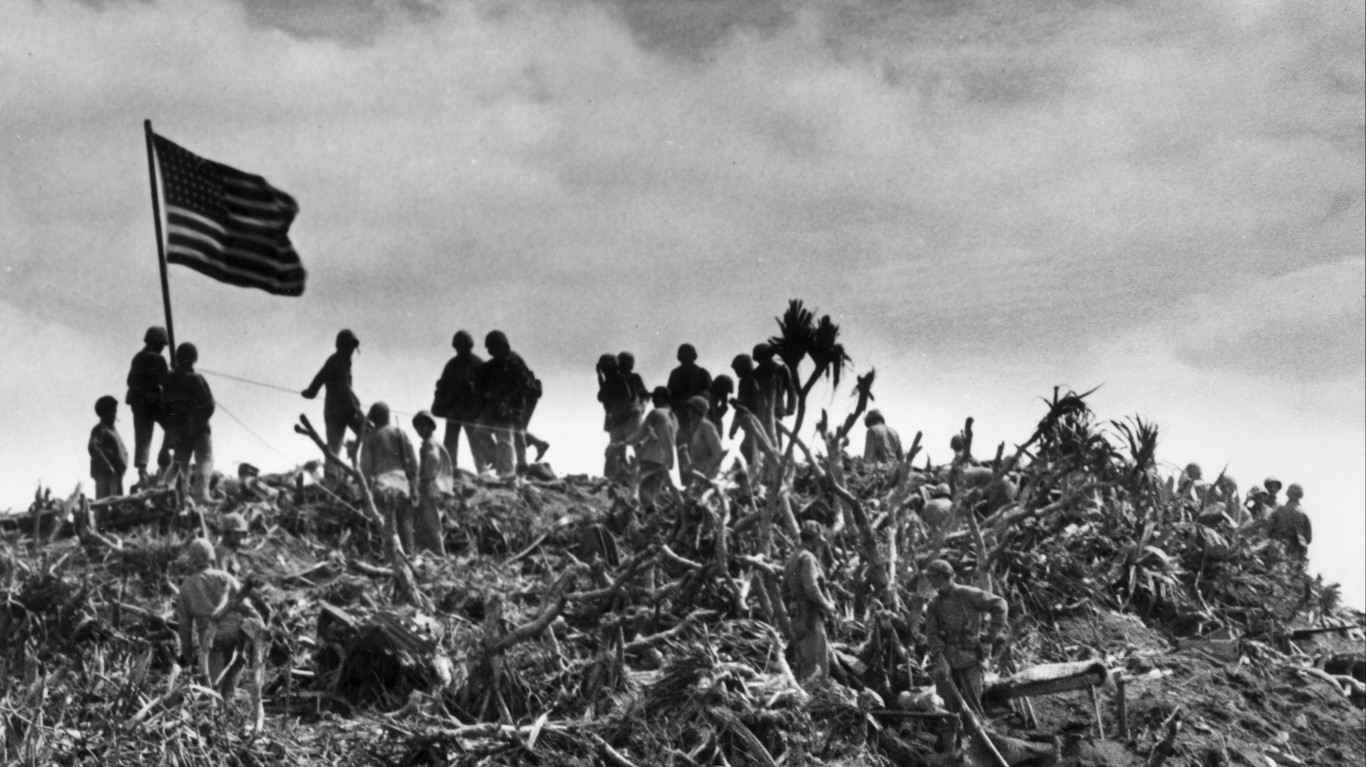
The Battle of Iwo Jima was waged in Japan during February 1945. By the end, there were 48,091 casualties, 26,031 Allied casualties, and 22,060 Axis casualties. The Allied powers present had 70,000 men. The Axis powers had 22,060 men.

The Siege of Tobruk occurred in Libya during April 1941, with 50,272 casualties: 5,929 Allies and 44,343 Axis. There were the 9th, 18th, 20th, and 24th Australian Brigades; 2 Australian Imperial Force, 7th Australian Division; British 70th Infantry Division; Polish Independent Carpathian Rifle Brigade with the Allied Powers. The Axis powers had the Afrika Korps (German) and Italian Army.

In August 1944, the Warsaw Uprising took place in Poland. The total casualties were 68,660: 36,000 for the Allies and 32,660 for the Axis powers. The Allied powers showed up with 49,000 men. 25,000 men came with the Axis powers.
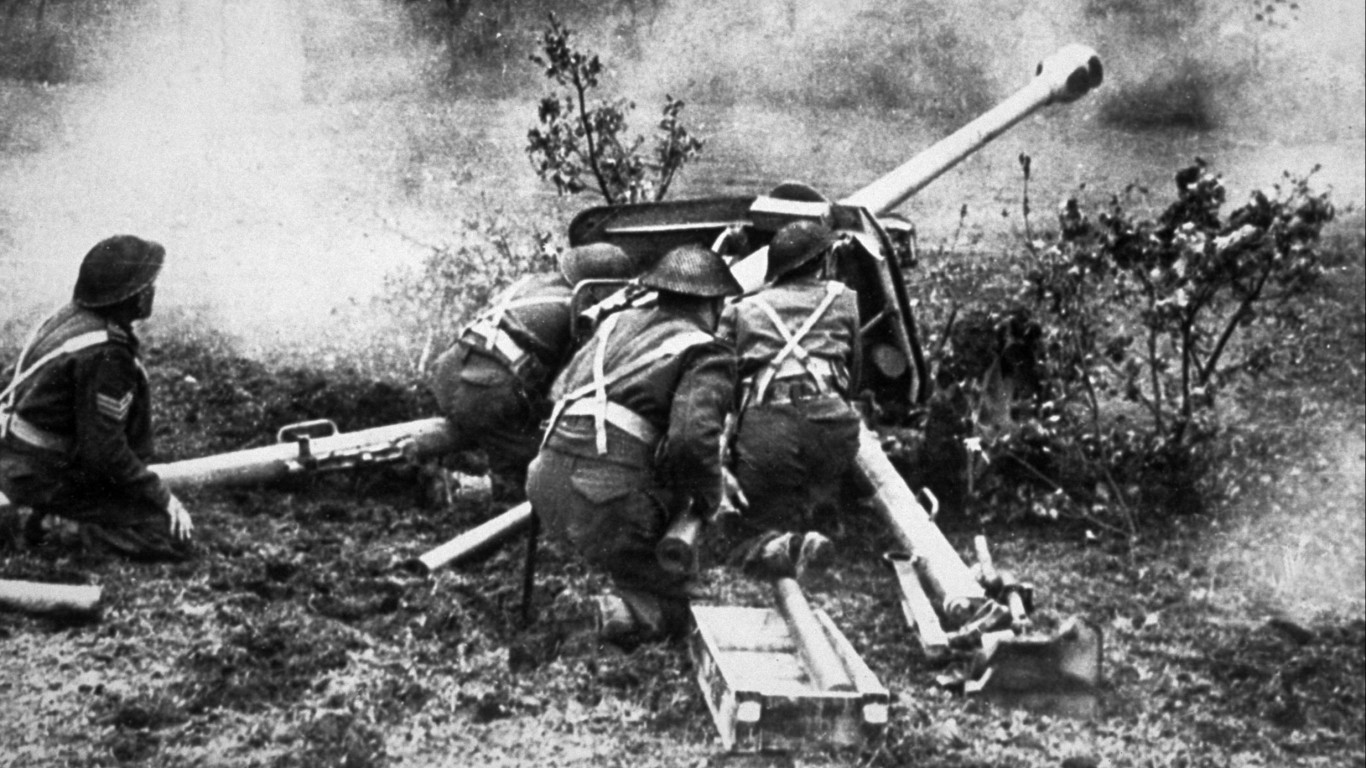
The Battle of Monte Cassino was waged in Italy during January 1944. By the end, there were 75,000 casualties: 55,000 Allied casualties and 20,000 Axis casualties. The Allied powers present had the US 5th Army, the British 8th Army, 1,900 tanks, and 4,000 aircraft. The Axis powers had the German 10th Army.
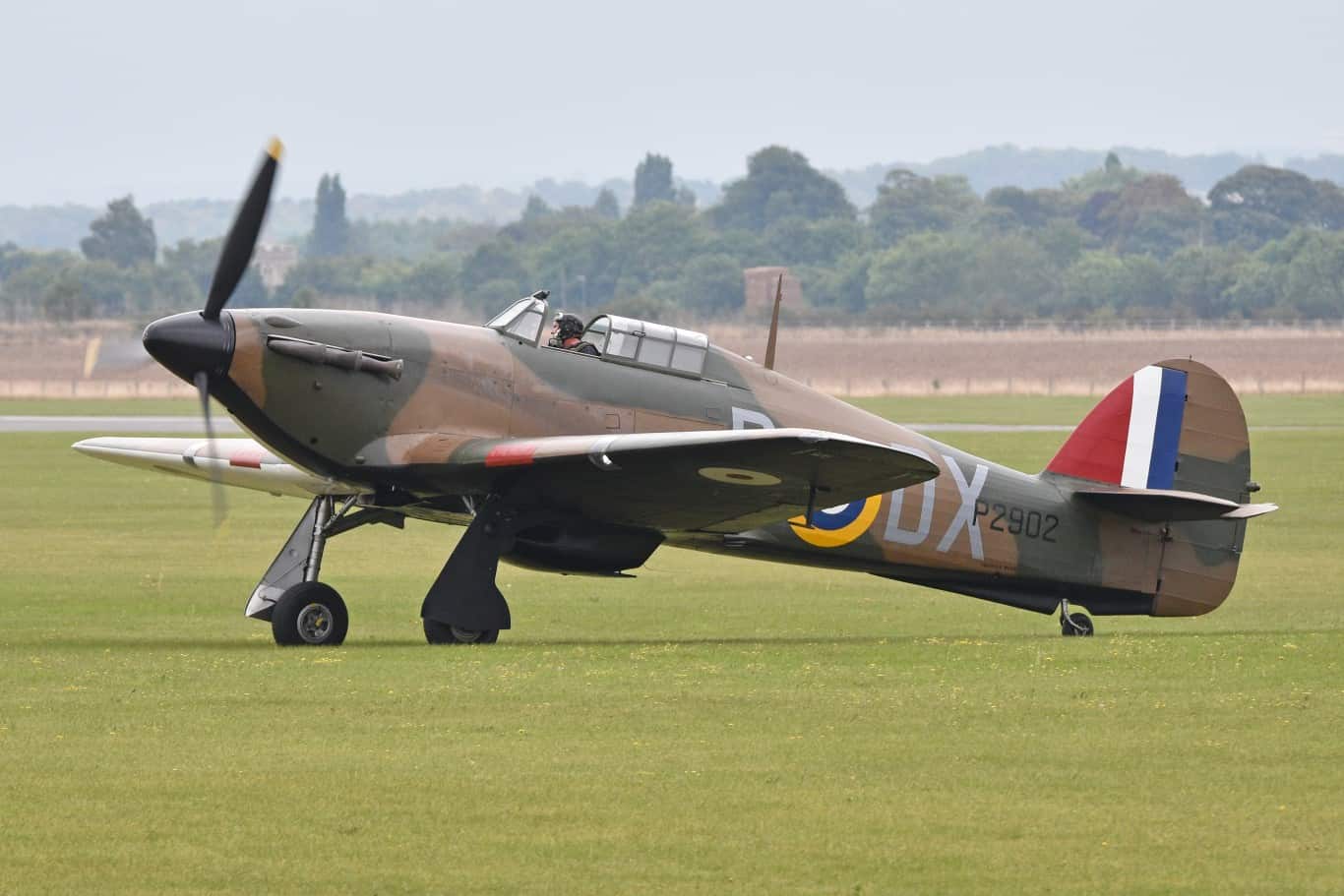
The Battle of Dunkirk occurred in France during May 1940, with 81,774 casualties: 61,774 Allies and 20,000 Axis. There were 338,226 men and 850 transports with the Allied Powers. The Axis powers had 800,000 men.
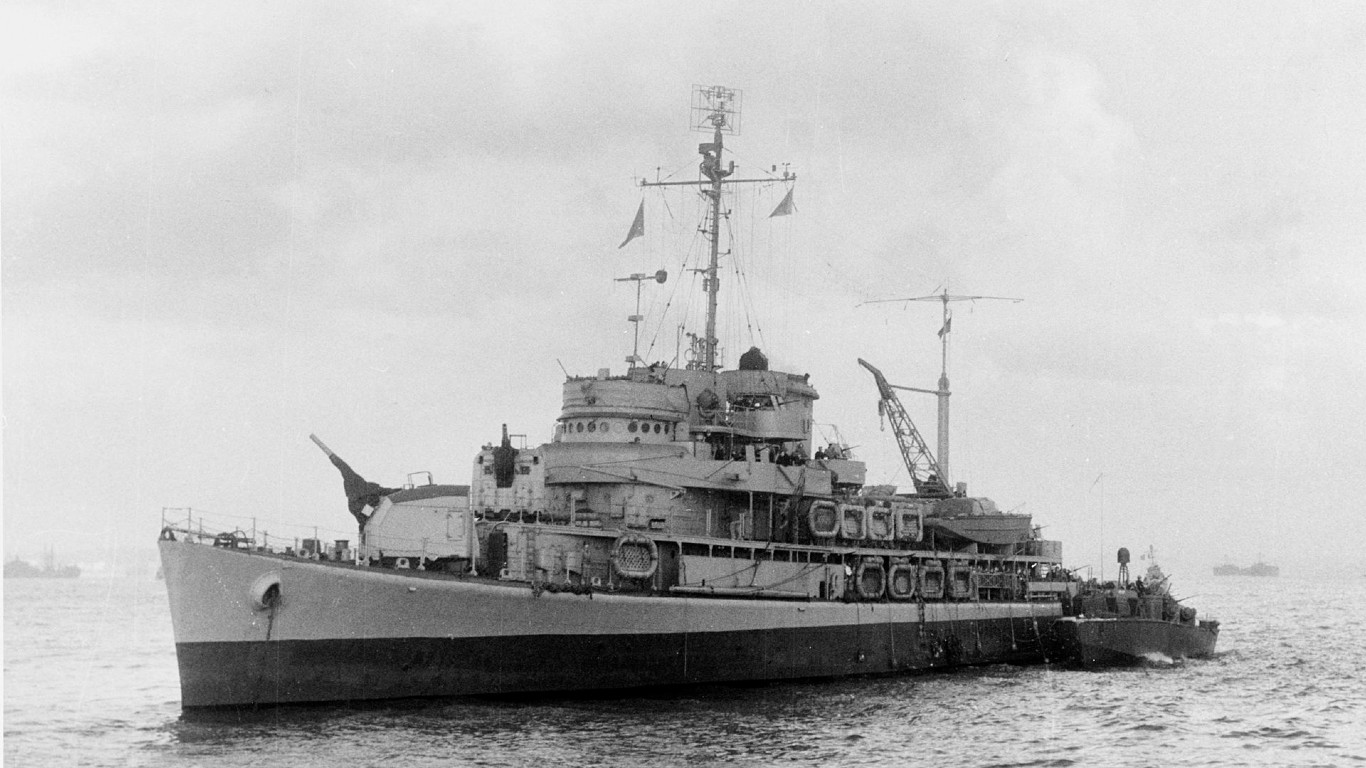
In January 1944, the Battle of Anzio took place in Anzio and Nettuno, Italy. The total casualties were 83,000: 43,000 for the Allies and 40,000 for the Axis powers. The Allied powers showed up with 150,000 men, while the Axis powers brought 135,000 men.
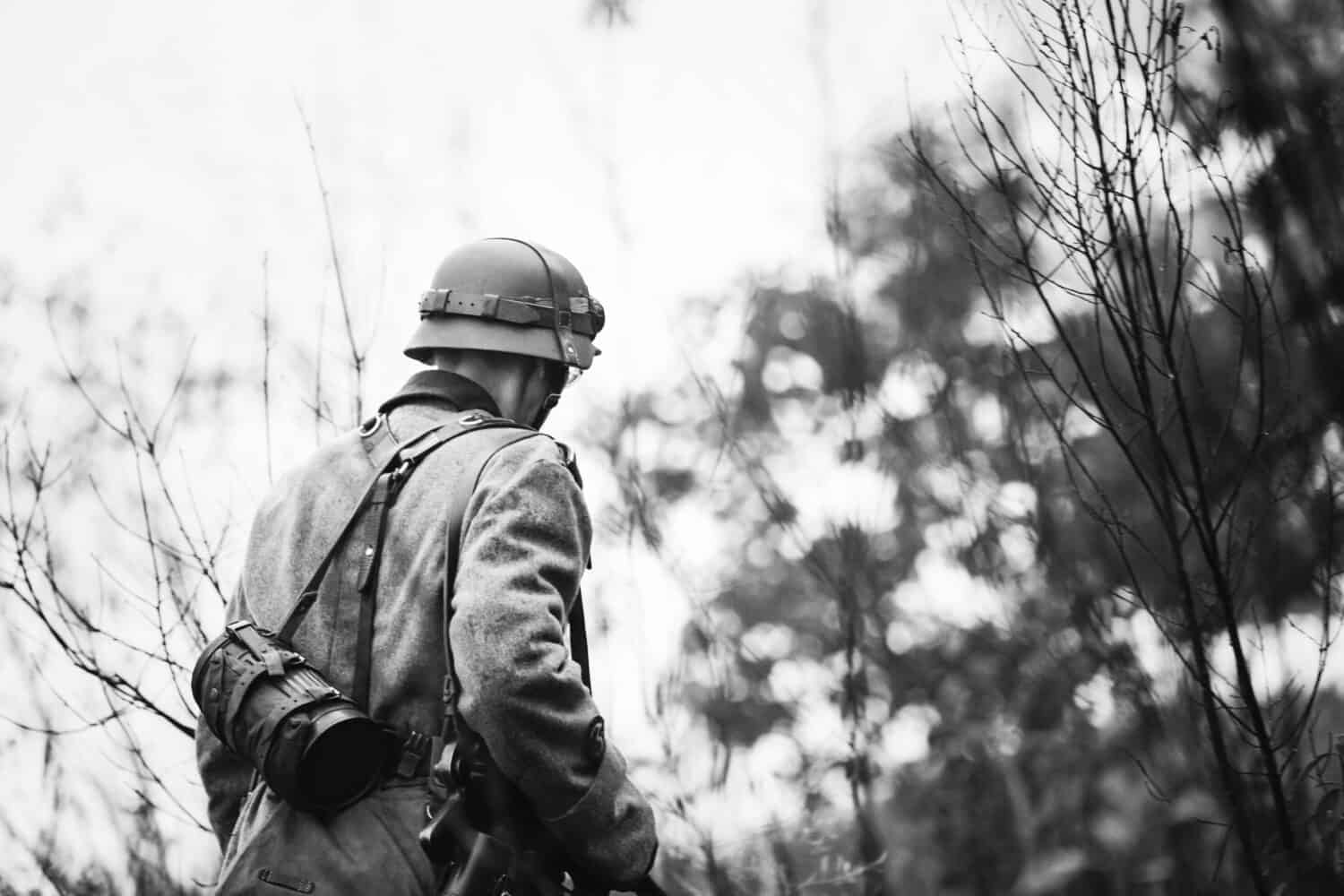
The Battle of Singapore took place in February 1942. By the end, there were 89,485 casualties: 85,000 Allied casualties and 4,485 Axis casualties. The Allied powers present had 85,000 men, while the Axis powers had 36,000 men.
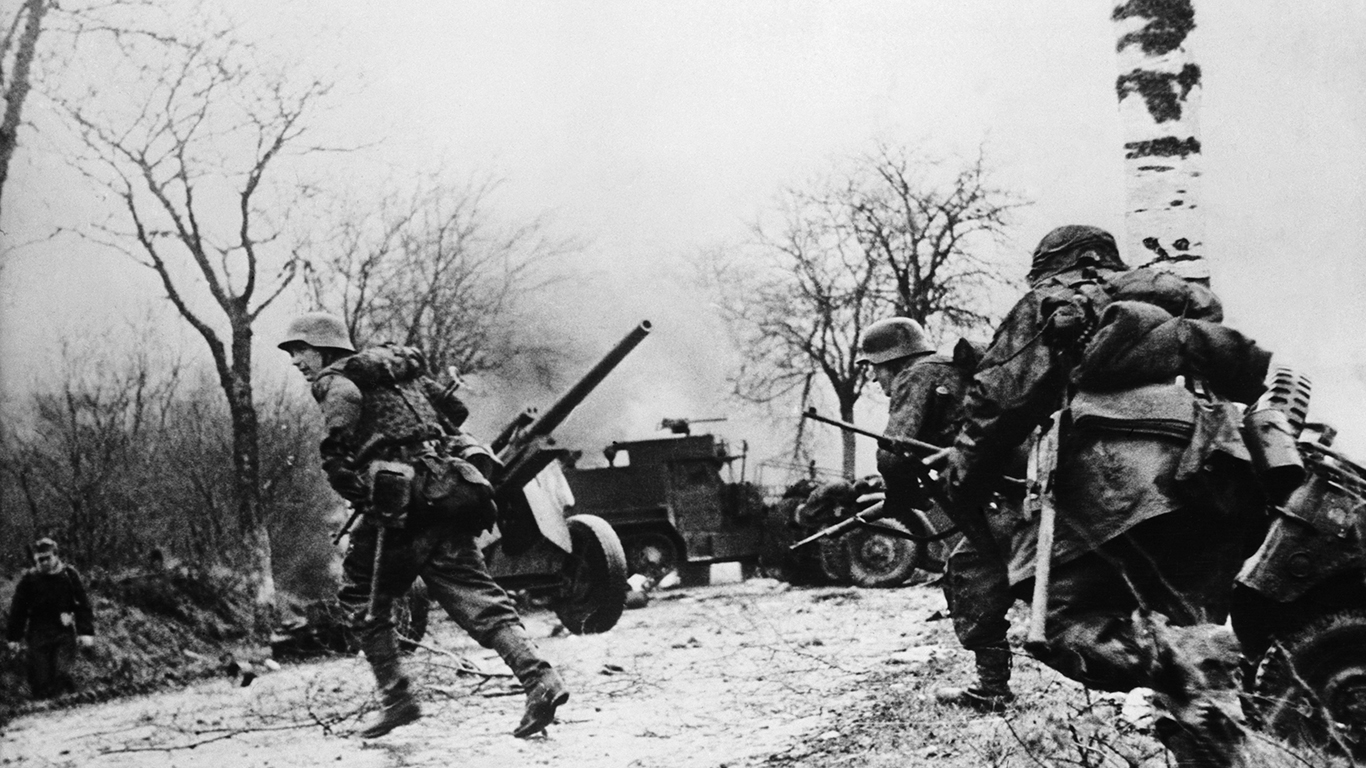
The Battle of the Bulge occurred during December 1944 in The Ardennes Forest(Belgium, Luxembourg, Germany), with 158,100 casualties: 90,900 Allies and 67,200 Axis. There were 840,000 men, 1,300 tanks, and 394 artillery with the Allied Powers. The Axis powers had 500,000 men, 1,800 tanks, and 1,900 artillery.

In April 1945, the Battle of Okinawa occurred in Okinawa Island, Japan. The total casualties were 167,000: 50,000 for the Allies and 117,000 for the Axis powers. The Allied powers had 183,000 men, 1,300 ships (40 aircraft carriers, battleships, cruisers, destroyers, and submarines), and 12,000 aircraft. 120,000 men, 1,500 ships (including battleships, cruisers, destroyers, and submarines), and 2,000 aircraft came with the Axis powers.

The Battle of Sicily was in July 1943. By the end, there were 191,820 casualties: 24,820 Allied casualties and 167,000 Axis casualties. The Allied powers present had 467,000 men, 600 tanks, and 14,000 vehicles. The Axis powers had 290,000 men, 260 tanks, and 1,400 aircraft.

The Battle of Greece occurred in April 1941, with 200,989 casualties: 93,389 Allies and 107,600 Axis. There were 692,612 men, 120 tanks, and 200-300 aircraft with the Allied Powers. The Axis powers had 1,245,000 men, 1363 tanks, and 700 aircraft.
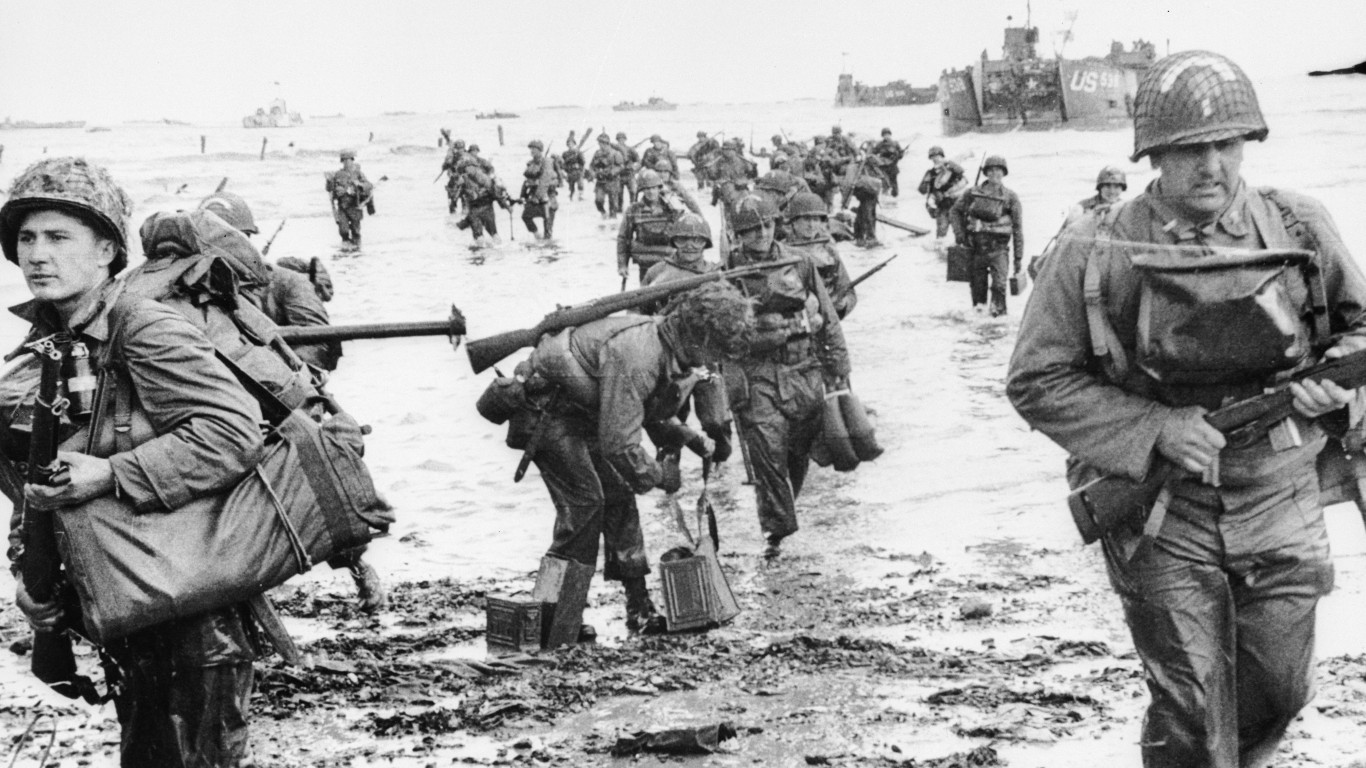
In June 1944, the Battle of Normandy took place in France. The total casualties were 409,000: 209,000 for the Allies and 200,000 for the Axis powers. The Allied powers showed up with 209,000 men. 200,000 men came with the Axis powers.

Operation Overlord was waged in Northern France during June 1944. By the end, there were 676,386 casualties: 226,386 Allied casualties and 450,000 Axis casualties. The Allied powers present had 2,052,299 men. The Axis powers had 640,000 men.

The Battle of Berlin occurred in April 1945, with 1,161,367 casualties: 361,367 Allies and 800,000 Axis. There were 2,500,000 men, 6,250 tanks, 7,500 aircraft, and 41,600 artillery with the Allied Powers. The Axis powers had 766,750 men, 2,224 aircraft, and 9,303 artillery.
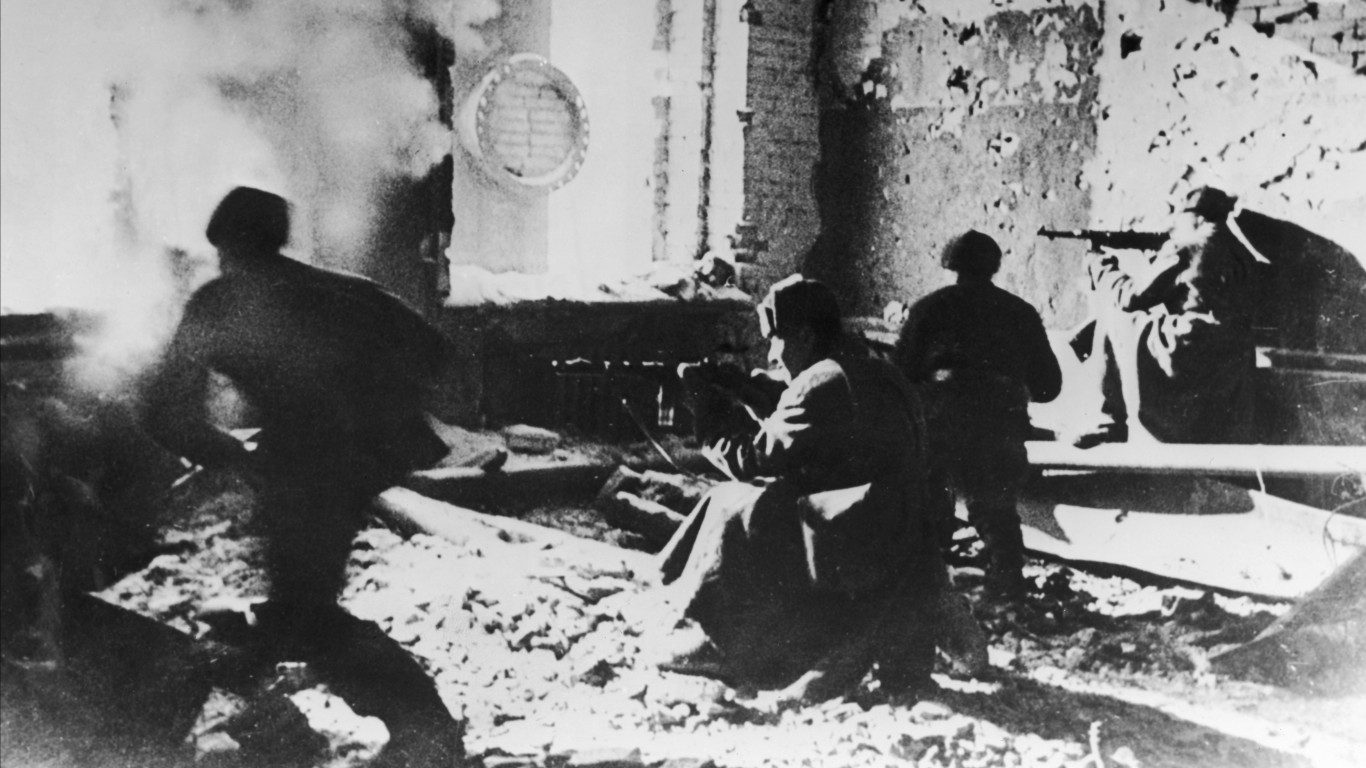
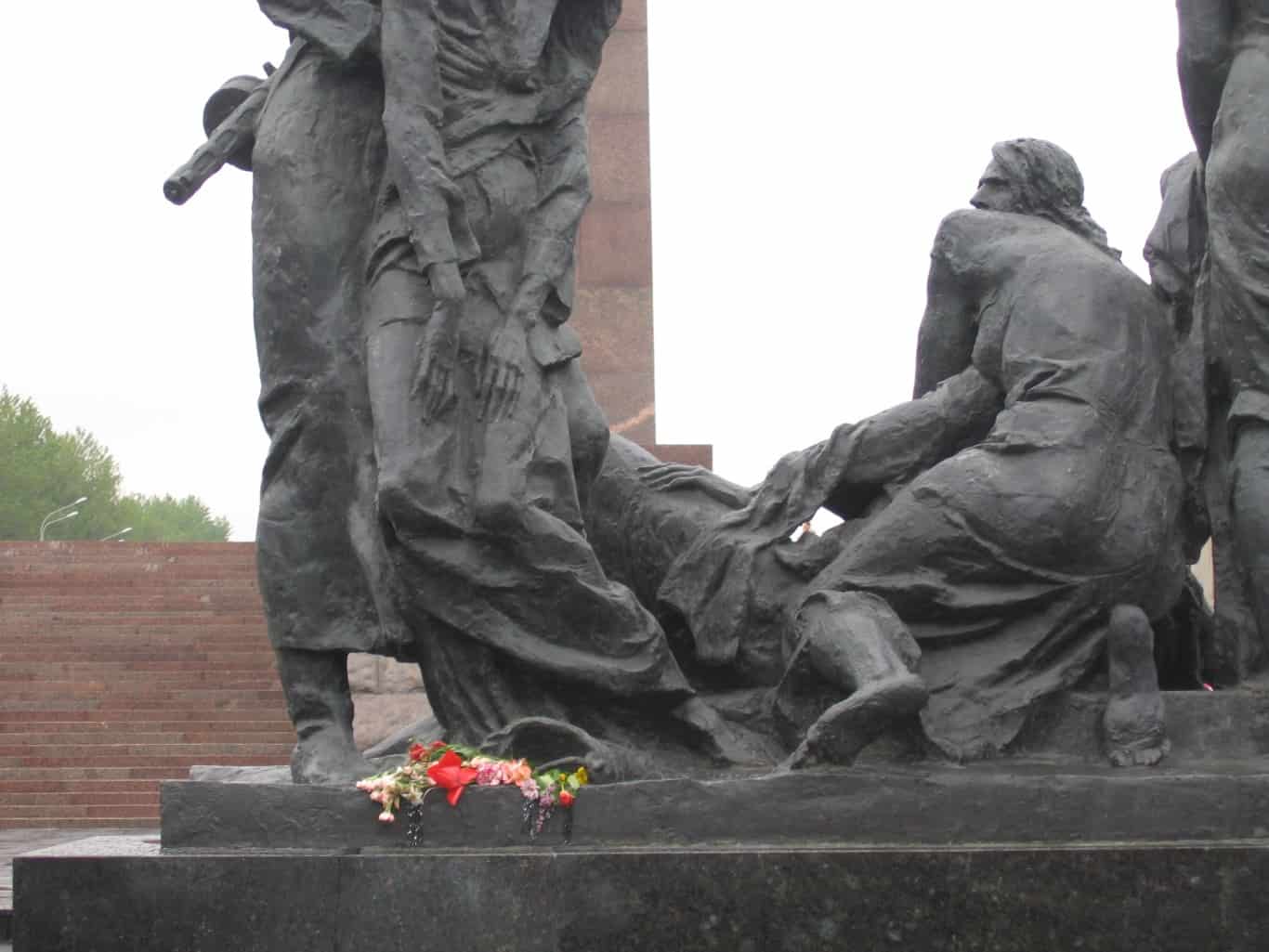
The Seige of Leningrad was waged in the Soviet Union during September 1941. By the end, there were 3,936,066 casualties: 3,436,066 Allied casualties and 500,000 Axis casualties. The Allied powers present had 930,000 men in the initial force. The Axis powers had 725,000 men in their initial force.
Start by taking a quick retirement quiz from SmartAsset that will match you with up to 3 financial advisors that serve your area and beyond in 5 minutes, or less.
Each advisor has been vetted by SmartAsset and is held to a fiduciary standard to act in your best interests.
Here’s how it works:
1. Answer SmartAsset advisor match quiz
2. Review your pre-screened matches at your leisure. Check out the advisors’ profiles.
3. Speak with advisors at no cost to you. Have an introductory call on the phone or introduction in person and choose whom to work with in the future
Get started right here.
Thank you for reading! Have some feedback for us?
Contact the 24/7 Wall St. editorial team.